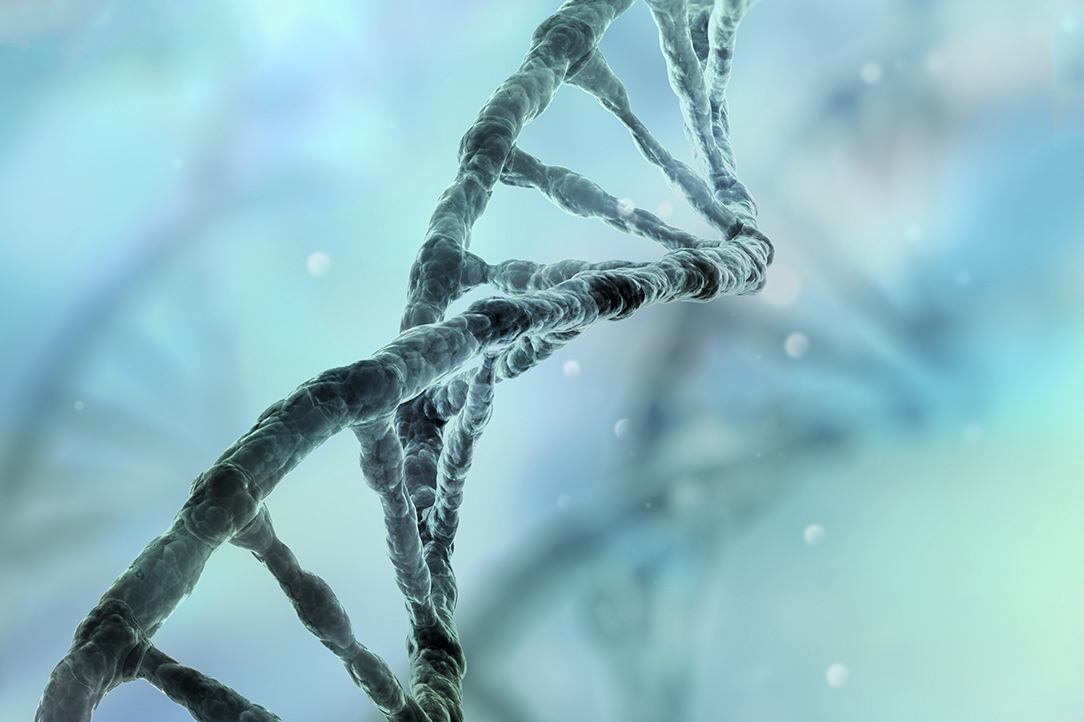It was her first Halloween at the Valley View apartments in Redmond, and Arpana Jinaga was eager to celebrate. It was 2008, and Jinaga, an accomplished software developer, had recently moved to the area to work at a technology company. She decked out her apartment in Halloween decor and donned a red cape purchased earlier that day in anticipation of an evening spent with her neighbors.
The small, three-story complex was filled with revelers that night. Costumed residents and guests milled from one unit to the next, laughing, drinking, and admiring each other’s costumes. A gregarious and gracious host, Jinaga welcomed several of her neighbors and their guests into her apartment, where they conversed and mingled before moving on to her neighbor’s apartment, where the group partook of vodka shots. By 3 a.m., the festivities were winding down. Jinaga said goodbye to the remaining guests and headed back to her apartment.
That weekend Jinaga didn’t leave her apartment or contact any of her friends or family. By Monday morning her parents, far away in India, had grown worried. Jinaga’s father asked Jay, a family friend also living in the area, to stop by and check on his daughter. The door to her apartment swung open with a knock and, joined by one of Jinaga’s neighbors, Jay ventured in. The men stepped cautiously into the apartment, and immediately smelled bleach. In the bathroom a blood-stained comforter filled the bathtub; in the bedroom, charred black satin sheets; and there, sprawled on the carpet beside her bed, was the 24-year-old programmer, bloody, naked, and soaked in bleach and motor oil.
Officers from the Redmond police department responded and quickly locked down the scene. The police collected samples from hundreds of items at the crime scene that could hold traces of the killer’s DNA and sent them to the state crime lab for analysis. Meanwhile, Redmond detectives began trying to whittle down the list of suspects, which initially included a number of guests from the Halloween party.
Two years after the killing, the arduous investigation culminated in a charge of murder in the first degree with sexual motivation against Emanuel Fair, a friend of a woman who lived downstairs from Jinaga. Fair, who is also known as Anthony P. Parker, was at the Valley View apartments that night, one of a group of revelers who spent time with Jinaga in her apartment. Investigators believe that sometime between 3 a.m. and 8 p.m., Fair broke down Jinaga’s door, raped, beat, and strangled her, then went to great lengths to try to scrub his DNA from the scene.
Whoever went to those great lengths, genetic material was left behind. Investigators were drawn to Fair because of a criminal history that includes a third-degree rape conviction, but it is the DNA that stands as the prosecution’s strongest evidence.
Justice has not been swift. Six years after charges were filed, Fair, now 33, spends his days shuffling between the King County Superior Court and the county jail while his two defense attorneys fight for a fair trial, a representative jury, and the opportunity to cross-examine key witnesses. The trial is scheduled to begin Jan. 13, 2017, with prosecutors seeking a sentence of 45 years to life.
Pretrial motions filed by Fair’s attorneys indicate that he received treatment different from that given other suspects at each step of the investigation. There is some merit to these claims. According to interrogation transcripts, for instance, the Redmond detectives cajoled the other chief suspect in the case, whereas they threatened Fair.
Then there is the DNA.
In recent decades, DNA evidence has become a ubiquitous crime-solving tool. The gold standard of forensic science, genetic profiles inferred from DNA evidence pave the way to exonerations, confessions, and convictions both on- and offscreen. But while single-donor DNA samples are straightforward to analyze, degraded samples that contain multiple people’s DNA—such as those found at the scene of Jinaga’s murder—are far more difficult to nail down. In fact, the DNA evidence that investigators are relying upon is of such low quality that a few years ago it would have been considered unreadable.
The case against Fair hinges on the forensic evidence, some matched by humans to a genetic profile, and some more complex mixtures analyzed by TrueAllele, a probabilistic genotyping software program that relies on sophisticated algorithms to analyze DNA mixtures that humans can’t. The program runs genetic data through its 170,000 lines of code, rapidly inferring DNA profiles and delivering a likelihood ratio that indicates the odds of a match. Mark Perlin, CEO of Cybergenetics, the private company that developed TrueAllele, says the software is capable of analyzing mixture samples with six or more contributors.
Only some of the more complex mixtures of DNA were sent to the Cybergenetics lab. The match statistics delivered by the software were far more definite than the numbers the state crime lab had generated when they analyzed the same samples. For example, the WSPCL found that a DNA mixture on Jinaga’s robe was 1,000 time more likely to contain Fair’s DNA than that of an unrelated African American. TrueAllele found that same sample to be 56.8 million times more likely to include Fair’s DNA.
Fair’s defense attorneys sought access to TrueAllele’s 170,000 lines of source code from Cybergenetics, but Perlin refused to make the code to his proprietary software available. Revealing TrueAllele’s code, even just for review, Perlin told the court, would compromise the company’s trade secrets, potentially causing irreversible commercial damage.
Fair isn’t the first defendant to question Cybergenetics’ computer program—defendants in six other states have petitioned unsuccessfully for access to their algorithmic accuser’s code. Last year a man in New York was sentenced to 15 years in prison after the software found him to be one of four, five, or six individuals who had handled a handgun recovered in a park.
This is the first challenge of this type in Washington; previously, TrueAllele has been used only to exonerate, not convict. Perlin says that overall, TrueAllele has been used in 500 criminal cases since 2009.
DNA evidence carries a lot of weight with juries, but experts say that mixture DNA is far less reliable than DNA from a single donor. Most of our genetic code is identical, but in some spots on each strand there are alleles—variations that differ from one person to another. To determine a DNA match, investigators compare a DNA strand’s 16 alleles; by the standards in most labs, 13 makes a match.
The system is not without its flaws. In 2010 researchers Greg Hampikian and Itiel Dror gave 17 expert forensic scientists the same DNA mixture and found that the results varied wildly from one scientist to the next. Those who were given information about the criminal case the DNA evidence would be used in were more likely to find evidence that implicated suspects.
Dror, a cognitive neuroscientist who worked on the study, says that it’s a mistake to think that probabilistic genotyping software is able to objectively analyze DNA mixtures. Like a human, he says, the software has to make assumptions about what is and isn’t useful information. With TrueAllele, no one but Perlin knows what those assumptions are. “Using software doesn’t solve the problem, because the human biases, assumptions, and discretions go into the software,” says Dror. “The software has human biases; to see what the biases are, we need to look at the software to see what it’s doing.”
Since TrueAllele doesn’t have to show its work, it would be difficult to discover if the code had errors. It’s not unfathomable that that could be the case. In 2015, investigators in Australia discovered an error in the code of a rival probabilistic genotyping program, STRMix, and announced that incorrect results were being used in 60 criminal cases, one a murder.
In September the President’s Council of Advisors on Science and Technology (PCAST) issued a report acknowledging that humans aren’t reliable interpreters of complex DNA mixtures and that computer software, while a step in the right direction, needs further scientific validation.
“The biggest issue is there is no truly independent assessment of TrueAllele or other programs,” says Amy Jeanguenat, CEO of the forensic consulting firm Mindgen. “They don’t work the same, and some are better at certain profiles and the community doesn’t know the benefits and weaknesses.”
There were other leads. Marc O’Leary, a convicted serial rapist and home invader who is serving a 327-year sentence in Colorado, was active in the area at the time, attacking women in their homes in a manner eerily similar to that of Jinaga’s killer; the detectives didn’t look into the similarities. Serial killer Israel Keyes visited the Seattle area that Halloween weekend, but when the FBI asked Seattle-area law enforcement if they knew of crimes that could have been committed by Keyes, the Redmond detectives didn’t respond.
Then there is the neighbor. Early in their investigation, detectives cast a wide net but focused much of their attention on the neighbor who discovered Jinaga’s body alongside Jay, going so far as to draft a probable-cause document supported by 48 pieces of evidence. (Since he has not been charged with a crime, Seattle Weekly is choosing to not publish the neighbor’s name.)
Jinaga’s murder occurred around 8 a.m., but she was last seen around 3 a.m. when she retired to her apartment at the end of the evening. Another Valley View resident arrived home from work within five minutes of 3 a.m. that night and said he saw a man—who, unlike Fair, was not black—standing in Jinaga’s doorway talking to someone inside. The suspected neighbor claimed not to recall making two calls to Jinaga on either side of 3 a.m. the night of the murder. Later that morning he went on an unplanned excursion to Canada, only to be turned around at the border. The man told Redmond detectives he had been “kind of wanting to explore.”
In interviews with the police, that neighbor’s friends and family members told detectives they believed it was possible that he had killed Jinaga–-at least three people told detectives that he had expressed concern that he may have gone to her apartment in his sleep. The neighbor revealed to the detectives that he had been off his psychiatric medication at the time of the murder; the investigators neglected to follow up to determine what medication he was prescribed and what condition the drug was intended to treat.
The neighbor and Jinaga had been friends, but drifted apart when she got a motorcycle and started devoting more time to the PNW Riders, he explained to Redmond detective Brian Coats in an interview the day Jinaga’s body was found. Their apartment manager, who told detectives she believed the neighbor may have killed Jinaga, recalled that he and Jinaga sometimes wrestled and that she also used to wrestle with him but stopped because he “doesn’t stop, even when it’s time to stop.” Jinaga, who practiced mixed martial arts, also sometimes got carried away when the two were wrestling, the manager told detectives.
After Fair was charged, the manager backed away from her earlier statements, saying she wouldn’t have accused the neighbor if she had known “there was this big black guy there.”
In 2009 the Washington State Patrol Crime Lab analyzed the items gathered from the crime scene for DNA testing and came back with the profiles of three men. A mixed sample from Jinaga’s neck was 3,803 times more likely to be a combination of Fair and Jinaga’s DNA than of Jinaga and a random black man. Samples from two places on her robe were considered by the crime lab to be 120 and 1,000 times more likely to be from Fair and Jinaga than from Jinaga and a random black man. DNA that could belong to Fair or the neighbor was found in a mixture on the roll of tape. A motor-oil bottle purchased by Jinaga was found in a plastic bag, along with her robe in the dumpster; it contained a mixture that was 120 million times more likely to be Jinaga and the neighbor’s DNA than that of Jinaga and an unknown individual. DNA from another Valley View resident was found on a bootlace that detectives believed served as the ligature in the murder. The man vehemently denied ever seeing the bootlace and detectives didn’t pursue it further.
For more than a year, the Redmond detectives and the state patrol worked to identify Jinaga’s killer. By May 2010, interview transcripts show that the Redmond detectives had whittled the suspect list down to two men, Fair and the neighbor.
Later that month the detectives and prosecutor met with the neighbor at the office of his criminal defense attorney, John Henry Browne. Detective Coats told the neighbor that Jinaga’s dad and sister contacted him every couple of weeks to check the status of the case. The detectives needed to close the case; “just to bring them a little bit of closure is what our ultimate goal is in all of this,” Coats told the neighbor. The detective tried to elicit information about the night of the murder that could eliminate his name from the suspect list, to no avail. The neighbor continued to assert that he didn’t remember what happened the night of the murder.
In August 2010 Detective Coats approached the neighbor again, asking if he could do anything “to shake a memory loose that could help you be a better witness for us and not be such an asset for the defense.”
“I really wish I had somethin’ I could, but just don’t—don’t know,” he replied. Transcripts reveal that the man continued to question whether he could have forgotten kicking in Jinaga’s door the night of her murder.
Like the TrueAllele software, Jinaga’s neighbor won’t be available for cross-examination. Until recently the prosecution’s case involved a single killer who broke into Jinaga’s apartment and gagged, raped, and strangled her. More recently the prosecutor’s office indicated that the next-door neighbor was not going to be available as a witness because their office wasn’t going to grant him immunity, as they had in earlier interviews, and he couldn’t testify without incriminating himself.
In a recent court filing, Senior Deputy Prosecuting Attorney Brian McDonald clarified his office’s stance: The evidence implicating the neighbor in Jinaga’s death doesn’t exculpate Fair. McDonald noted that the neighbor may have been involved in the murder and continues to be a “person of interest.” In another court filing, the state described him as an “uncharged accomplice.”
Jinaga’s friends are glad to hear someone is finally being tried for her death. “It’s a long time coming–I didn’t realize this guy was going up for trial,” says Colt Bristow, a friend of Jinaga’s from the PNW Riders. “Glad they’re going forward with it.”
news@seattleweekly.com






